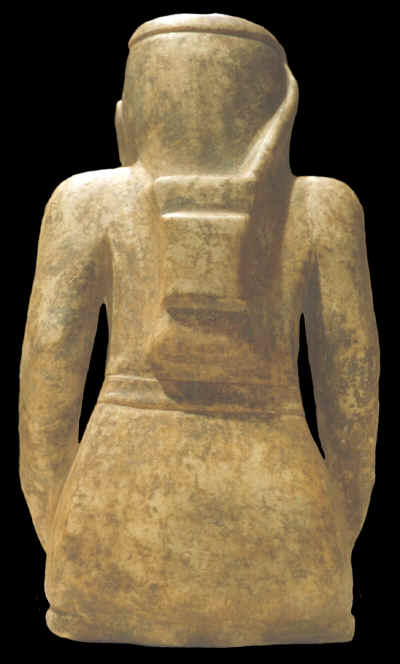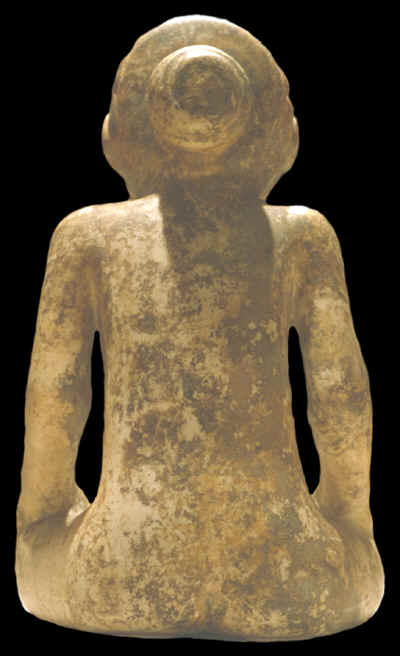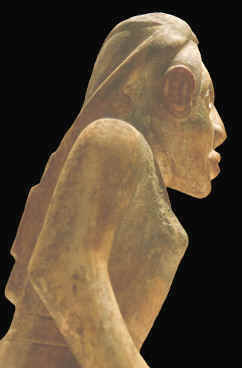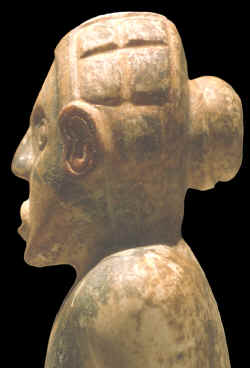|
|
|
The most impressive stone artifacts left behind by the Mississippian culture are the large stone sculptures. These items are represented either as pipes or free standing images like the examples from Etowah. Emerson reports that"----it is possible to distinguish two distinct styles of such sculpture. One of these styles seems to have its greatest concentration in the Georgia, Tennessee, and Kentucky area--." Also that "The other style epitomized by the large, bauxite (flint clay) effigies from the Spiro site in Oklahoma, is characterized by a highly developed, realistic portrayal of human or near-human figures. The emphasis seems to be on portrayal of figures dressed in specific costumes and/or carrying out specific acts or deeds." (Emerson 1982: 2). |
|
|
|
|
The Etowah statues were obviously important to the people who made them. They were certainly carved by a skilled craftsman who probably made other sculpted stone or wood statues during his lifetime. Without an oral history or written documents by the people who made them, their exact purpose will probably always remain a mystery. They may have been representations of lineage ancestors of the ruling class or they may represent some type of mythology such as the beings who created the first humans. |
|
|
|
|
Mississippian artisans used primitive tools to make their ceremonial objects. They didn't have hard metal tools to carve stone until European traders began bringing them in. The only metal they used was copper but that was to soft for sculpting marble. The Etowah marble statues would have been shaped with hammerstones by pecking the surface into shape and with abrasive materials such as sandstone to finish the surface. |
|
|
|
|
The two painted marble statues from Mound C were important to the people who used them 625 to 750 years ago. They're an important legacy that is helping to understand the people who once lived in northwestern Georgia at that time. These artifacts are also important because "without cultural identity nothing remains of the people." |
|
|
VISIT ETOWAH MOUNDS The Etowah Indian Mounds Historic Site contains six earthen mounds. Mound A is one of the tallest in the country and there is a spectacular view from the top. The site also contains a museum where the extraordinary painted marble statues illustrated in this article can be seen. Other facilities include a gift shop and riverside benches. (Note: The statues are currently in the process of being returned from the "Hero, Hawks, and Open Hands" exhibit 5-31-05) HOURS:
Tuesday
to Saturday---9:00 A.M. to 5 P.M. ADMISSION: Charge for admission is $2.50 to $4.00 |
|
|
"REFERENCES"
1930,
Shetrone, Henry Clyde, "The Mound - Builders," pp. 123-125. |
|




